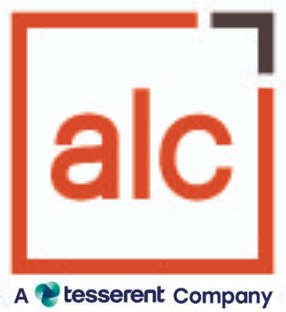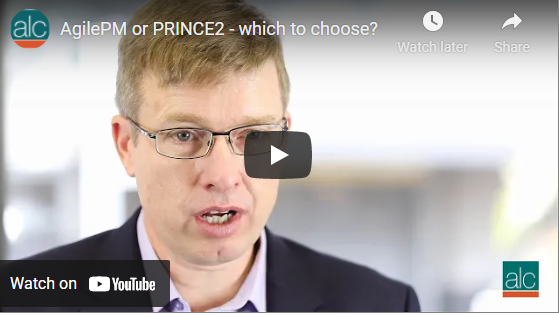Course Contents
1. Agile Ways of Working
- Differences between projects and BAU (Business as Usual)
- Agile and its common approaches, how and why agile approaches have developed and where they are used.
- History of agile, its contrast to the waterfall way of working and how the agile manifesto fits in
- Different levels of agile maturity and well-known agile frameworks
- Behaviours, concepts and techniques that characterise agile
- The PRINCE2 Agile view of ‘agile’
- Kanban, the Kanban method and its six general practices, including the use of Cumulative Flow Diagram (CFDs)
- Core concepts of Lean
- The use of workshops
- How to transition to agile
- Scrum essentials, Scrum teams, Scrum events, Scrum artefacts and Sprints
2. Combining PRINCE2 and Agile Ways of Working
- Complementary strengths of PRINCE2 and the agile ways of working
- Who can benefit from using PRINCE2 Agile and in what contexts/situation
- Make-up of PRINCE2 Agile (frameworks, behaviours, concepts, techniques, focus areas)
- The eight ‘guidance points’
- How PRINCE2 controls and governance can enable agile to be used in many environments
- What a typical PRINCE2 ‘project journey’ looks like in an agile context
- Apply and evaluate the focus areas to a project in an agile context
3. Purpose and Use of the Agilometer Throughout a Project
- The six sliders used on the Agilometer, explain their significance and how to improve them
- Requirements terminology, decomposition and prioritization, including MoSCoW and Ordering
- How requirements prioritization is used
- The rich communication focus area, its importance and its key techniques
- How to manage frequent releases and the benefits of ‘failing fast’
4. The Six Aspects of a Project in an Agile Context
- How to use the ‘hexagon’ in relation to the six aspects of project performance
- Use of tolerances in terms of what to ‘fix’ and what to ‘flex’ in relation to the six aspects of project performance
- The five targets that underpin the use of the hexagon
- Why the ‘fix and flex’ approach is good for the customer
5. Tailoring PRINCE2 principles, themes, processes and management products to a Project in an Agile Context
- 5 PRINCE2 Agile behaviours (Transparency, Collaboration, Rich Communication, Self-Organization, Exploration)
- How to incorporate agile in all seven PRINCE2 processes and all seven themes but that the amount appropriate to each will vary depending on the project context
- The two common Organization roles of Scrum master and Product owner
- How to adjust roles, including the use of specialist roles, and the options for team organization in a project
- Make-up of a typical delivery team
- Servant leadership, its use and importance
- How to define Working Agreements
- Quality setting techniques including ‘definition of done’ and the use of acceptance criteria
- Quality testing, quality checking and management techniques
- Approaches to planning and typical planning techniques
- Approaches to risk and how agile concepts mitigate many typical risks
- How blending PRINCE2 with agile approaches controls, responds to, and minimizes the impact of change, including risk management and configuration management
- How empowered self-organising teams handle change dynamically within set tolerances
- Common feedback loops and their importance
- Progress monitoring techniques including use of Work in Progress boards, burn charts, information radiators
- Agile techniques that may apply to each PRINCE2 process including Cynefin
- How to flex the ‘Direct a Project’ stage and the benefits of collaborative working
- How to ‘manage by exception’ with emphasis on empowerment, quantity of deliverables, rich information flows and value of deliverables
- Why PRINCE2 ‘stages’ may not be required, including use of timeboxes and Scrum of scrums
- Typical output mechanisms when ‘Controlling a Stage’ and ‘Managing a Stage Boundary
- Use of retrospectives and how to make them effective
- Managing Product Delivery using Scrum and Kanban
- How to define Work Packages, Product Descriptions, quality criteria and tolerances
- Guidance on behaviours, risks and the frequency of releases
- How to manage Stage Boundaries and the similarities between a stage and a release
- How to assess quantity, quality and benefits of stage deliverables
- How to effectively close a project, including evaluation of the use of agile
- How to tailor PRINCE2 products, including Work Packages, Highlight Reports and Checkpoint Reports
- Techniques that may apply to each PRINCE2 theme including requirements, defining value and user stories
- Guidance on the use of contracts
- PRINCE2 Agile delivery roles
- How to use the Health Check
- Fundamental values and principles of agile
- Outline tips for the PRINCE2 Agile project manager
Throughout the PRINCE2 Agile course, delegates will be exposed to numerous examples of examination questions. We will undertake a number of exercises and ‘question-and-answer’ sessions that will help to consolidate the learning, thereby ensuring that delegates are more than adequately prepared for the final examination.
6. PRINCE2 Agile Foundation & Practitioner Exam
The Foundation and Practitioner paper-based exams will be held during the class.
Fees
Fees per person
PRINCE2® Agile Foundation & Practitioner – Course & Exam Vouchers (5 days)
Fees Include:
- Comprehensive ALC Course Workbook
- Official Axelos textbook PRINCE2 Agile® (included with Foundation module)
- Practice Exams
- PRINCE2 Agile® Foundation Certificate Exam Voucher
- PRINCE2 Agile® Practitioner Certificate Exam Voucher
Exams and Other Information
NOTE: you will be expected to do some evening study during the course
Foundation & Practitioner Exams
Participants of the PRINCE2 online training course will be provided with an online exam voucher to sit the exams at a time and date of their choosing within 12 months of the course. The web-proctored exams are available 24/7 and run by the examination institute PEOPLECERT.
The Foundation Certificate exam format is:
- Objective testing
- One-hour multiple-choice paper
- 50 questions with a pass mark of 55%
- Closed book exam
The Practitioner Certificate exam format is:
- 2.5 hour exam
- Open book (PRINCE2 Agile book only)
- Objective Testing Exam
- Taken on the afternoon of the fifth day
- 50 questions totaling 50 marks (1 mark per question)
- Pass mark is 60% (30 correct answers)
Note – Re-certification is required 3-5 years after original certification
Pre-Requisites
The Foundation Certificate is a mandatory pre-requisite to undertake the Practitioners exam.
Practitioner Module
You can enroll direct in the PRINCE2 Agile Practitioner module if you hold any of the following certifications:
- PRINCE2 Foundation 2009 or 2017 version,
- PRINCE2 Practitioner 2009 or 2017 version,
- PRINCE2 Agile Foundation
- A current Project Management Professional® (PMP),
- Certified Associate in Project Management® (CAPM),
- IMPA Levels A,B,C and D® (Certified Projects Director)
NOTE: Although any of the above certifications are acceptable as a pre-requisite to the Practitioner module, we strongly recommend that delegates hold a recent PRINCE2 certificate before enrolling in the Practitioner module.
 Project Management
Project Management 





